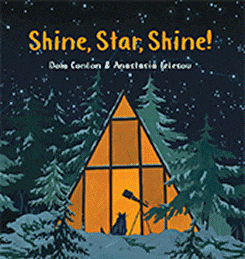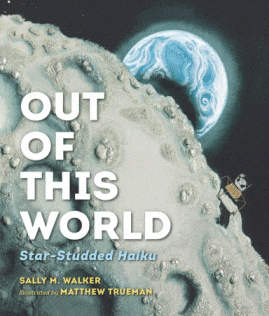
Shine, Star, Shine
Shine, Star, Shine
Dom Conlon
Anastasia Izlesou
CSIRO Publishing, 2022
32pp., hbk., RRP $A24.99
9781486316823
Open your eyes.
Someone shook a fizzy universe and a festival of colour sprayed out.
It’s a nebula – gas and dust squeezed ’til it sparks and this is how our Star is born. ..
Our star’s called the Sun and without her there’s be no life on this planet called Earth…
Using lyrical text and stunning illustrations, young readers share the journey around the planet by a boy and his cat to see how all life is touched in some way by the sun. Whether it’s ripening the wheat on farms in Idaho, or providing warmth for Australian children to romp in “whale-blue waters” each day the Sun enables and encourages life to grow in one way or another, as it shines through days, seasons, years, even lifetimes…
There have been many books in library collections that have the sun as their focus for information, but few would be as poetic as this one. while still having so much information packed into it , including some facts that explain the use of some of Conlon’s terminology such as “planet-turner” because of the Sun’s gravitational pull on the planets of the solar system. Indeed, that in itself could spark an activity as students consider some of the things for which the sun is responsible or necessary and then devise their own vocabulary.
As well as the imaginative text, the illustrations carry their own story that could be told without reference to the words as they are so rich in both detail and imagery.
Teachers’ notes exploring the science as well as the language are available.
